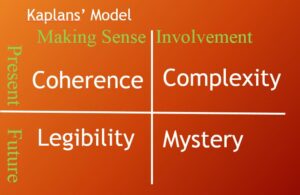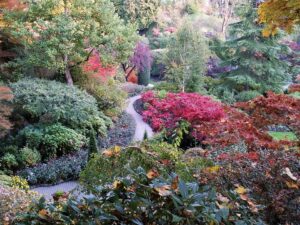A familiar children’s story told by many authors including Walt Disney, titled “Country Mouse, City Mouse” shows that the main characters in the story have different prefences for the type of environment they would like to live in. The City Mouse, of course, preferring the hustle and bustle of the city while the Country Mouse preferring a much simpler and quieter life. This tale illustrates a common concept of Environmental Psychology called environmental preference. Environmental Psychology research shows that we prefer to live in places that are a) at an optimal level of stimulation and arousal for us, b) provide us both prospect and refuge, and c) allow us to make sense of the environment while simultaneously engaging us.

Optimal Arousal in Environmental Preference
Each of us has a different perspective on how much stimulation we prefer: some of us are thrill seekers who love roller coasters and other high speed adventures, who others are more content with slower paced environments. Finding a place where we live, work, and play that provides us the “just-right” amount of stimulation will likely be an environment that we prefer. Oftentimes these environments provide us “affordances” that meet our needs, whether they be a “need for speed” or not!
Which classroom environment seems more of a good fit for your preferred level of stimluation?


Photo: www.itssnc.edu www.kindercraze.com
Prospect-Refuge Theory (Nassar & Fisher, 1992)
Another theory of Environmental Psychology tells us that we prefer environments that have a good deal of both prospect (the ability to see and take in our surroundings) and refuge (places to hide if there is danger). Evolutionary Psychologists believe that we developed this preference as a mechanism for protection from harm in our home environments — where we can see danger coming from afar and hide from it if necessary.

www.designingthelandscape.files.wordpress/
For example, this environment has great prospect over the lawn and some nice refuge from the elements under the protective awning above.
Kaplans’ Model of Environmental Preference
Rachel and Stephen Kaplan (1982) formed a model to describe how environmental preference is based on a good balance between our ability to make sense of the environment and find our way through it and our engagement with that same environment. We prefer environments that make good sense to us, that are legible and coherent – but not to the extreme or else they become boring. The other side of that coin is that we also prefer environments that involve and engage us – want to encourage us to explore by providing good complexity and some mystery – but again, not to the extreme or else they can become scary or overwhelming.
For example: this environment has a path that helps us understand how we would travel through the environment because it is legible. However, there is also a good bit of complexity with the different foliage colors and textures adding engagement and mystery. This environment seems to have a good balance of both “making sense” and “involvement” that would lead us to prefer this place.
Kaplan, R., & Kaplan, S. (1982). Humanscape: Environments for People. Ann Arbor, Michigan: Ulrich’s Books.

